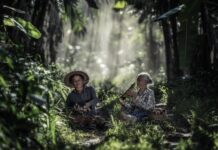Philippines’ renewable embrace of the sun
By Jim Neale
While the Philippines is one of the most energy dependent nations in Asia, it is now finding solutions and embracing some of the most advanced solar technology available. This new strategy is already having a positive impact on the inefficient and strained power system, which supplies electricity to the scattered islands of the archipelago.
Due to a lack of natural resources, 70 percent of the country’s electric power is generated from imported fossil fuels. Since foreign fuel has to be shipped to the Philippines, the country holds one of the highest per kilowatt hours in the world, ranking even higher then the costly energy rates of its regional neighbours like Singapore, Hong Kong and Japan.
The Manila-based Asian Development Bank (ADB) has launched its Asia Solar Energy Initiative, which aims to raise US$2.25 billion to fund both private and public sector power generation projects throughout Asia and the Pacific. It is hoped that this transition to clean energy will
help slow and perhaps even alter the course of global warming.
A more direct example of ADB’s commitment to combat the effects of climate change can be found on the roof of its own headquarters. It has recently installed a 680-kilowatt peak (kWp) solar power system, to help generate over three percent of the bank’s daily electricity requirements.
In the aftermath of deadly Typhoon Haiyan in November 2013, many non-governmental organisations have recently contributed clean renewable energy alternatives to isolated communities of the Philippines. Most people live with limited, intermittent electrical supply and in some towns, none at all. Thousands of donated solar lanterns have improved the health conditions and quality of life for the families in these remote villages by reducing their exposure to kerosene lanterns. Solar technology is helping to replace the expensive and hazardous dependence on kerosene, and allowing children, for the first time, to read more easily at home and improve the quality of their education.
On the Philippine island of Negros Oriental, overseas investors are taking advantage of the government’s new Feed-in-Tariff policy, which offers tax incentives for renewable energy enterprises. These encouraging governmental approaches have helped to secure private sector investment in clean energy, as well as giving an added boost to the local economy. Job development and skills are created on site to construct, maintain and modernise these renewable power plants. The uninterrupted flow of efficient electricity means factories, schools and offices can operate at full capacity and economic growth will be sustainable and clean.
In recent years, advances in technology have also made solar power more cost effective and economically realistic to utilise. Lower cost per kilowatt-hour means solar has become more affordable, viable and beneficial to a warming world. Green and non-depleting technology can be a successful strategy to counter the realties of climatic change, and its gradual acceptance in the Philippines has allowed its people to heal and even prosper, while embracing the renewable power of the sun.
For more stories and photos, check out Asian Geographic Issue 114.











